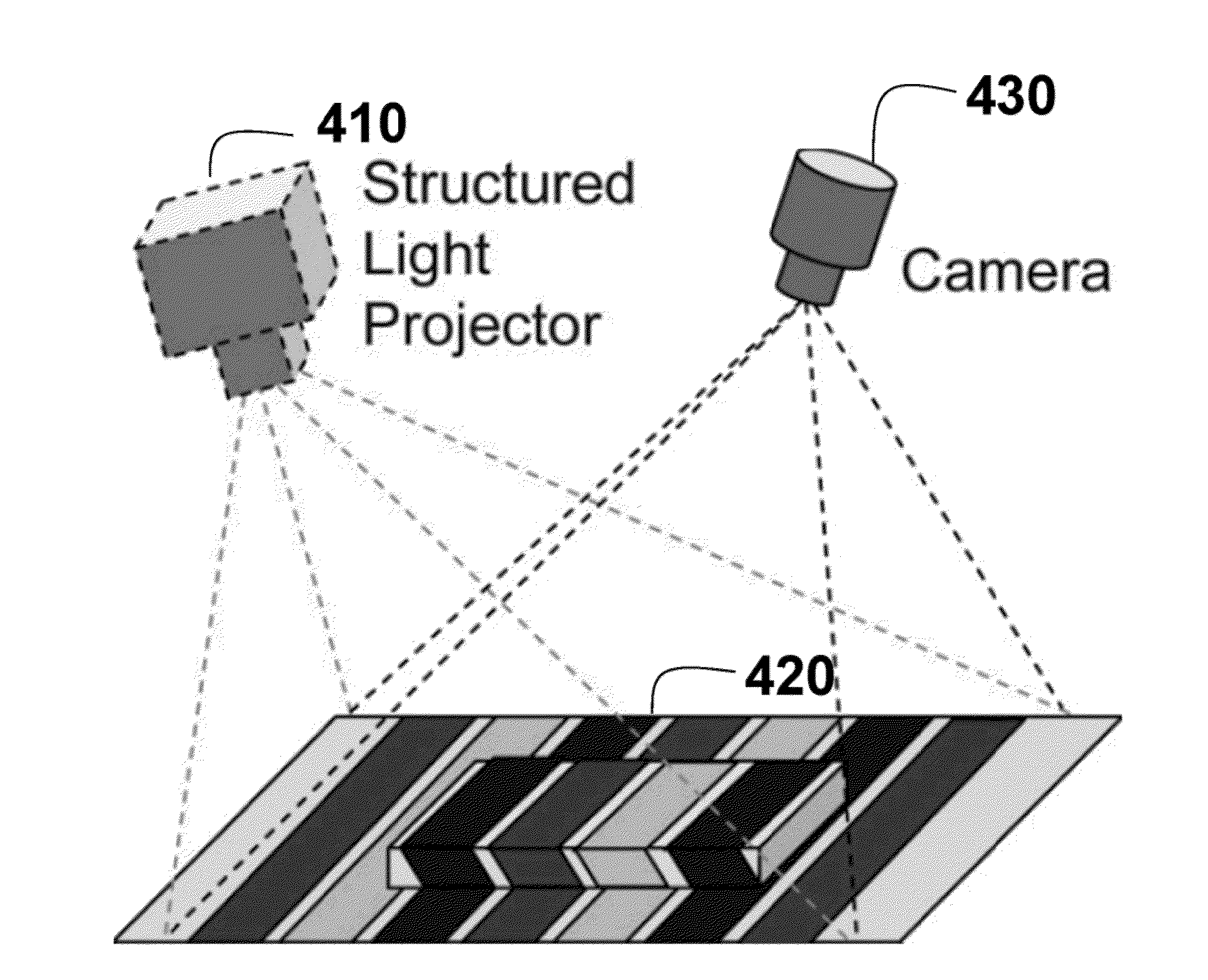Method and System for Generating Structured Light with Spatio-Temporal Patterns for 3D Scene Reconstruction
- Summary
- Abstract
- Description
- Claims
- Application Information
AI Technical Summary
Benefits of technology
Problems solved by technology
Method used
Image
Examples
Embodiment Construction
[0031]The embodiments of our invention provide a method and system for reconstructing a scene using structured light using a set of spatio-temporal decodable patterns.
[0032]FIGS. 4A and 4B show a basic setup of the system schematically and in 3D, respectively. A projector 410 projects a set of patterns 411 onto a scene 420. A camera 430 acquires a set of images 431 of the scene with the projected patterns. A processor 440 generates the set of pattern, and decodes the patterns to generate a reconstructed scene 441. The processor includes memory and input / output interfaces as known in the art. The processor can be connected to the projector and camera for synchronized operation.
[0033]Spatio-Temporal Decodable Patterns
[0034]We first describe the generation of our set of spatio-temporal decodable patterns for SL systems. The patterns can be used for a number of other computer vision applications, such as 3D surface scanning, dynamic scene illumination, distortion correction, and advance...
PUM
 Login to View More
Login to View More Abstract
Description
Claims
Application Information
 Login to View More
Login to View More - R&D
- Intellectual Property
- Life Sciences
- Materials
- Tech Scout
- Unparalleled Data Quality
- Higher Quality Content
- 60% Fewer Hallucinations
Browse by: Latest US Patents, China's latest patents, Technical Efficacy Thesaurus, Application Domain, Technology Topic, Popular Technical Reports.
© 2025 PatSnap. All rights reserved.Legal|Privacy policy|Modern Slavery Act Transparency Statement|Sitemap|About US| Contact US: help@patsnap.com



